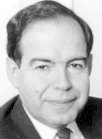 who says:
who says:"This form of transdisciplinarity is being progressively clarified through pressure on individual disciplines to interrelate their insights. This in part arises from the inadequacies detected in uni-disciplinary programmes and the consequent demands by society for more integrative approaches. Disciplines have traditionally resisted such pressures and university faculties have done much to reinforce this anti-integrative orientation. Increasing social opposition to the sciences in recent years has been a consequence. The classic text that positions this form of transdisciplinarity in relation to the preoccupations of individual disciplines, interdisciplinarity and multidisciplinarity, is that of Erich Jantsch (1972). The continuing work that best exemplifies this form is that of general systems research, however its concerns are seen to overlap with the discipline of cybernetics (cf the International Society for Systems Sciences and the World Organization of Systems and Cybernetics) and the increasing interest in chaos theory and self-organization. Also relevant are attempts at a so-called Theory of Everything (TOE) in fundamental physics, as well as the concern with knowledge organization as exemplified by such bodies as the International Society for Knowledge Organization"







